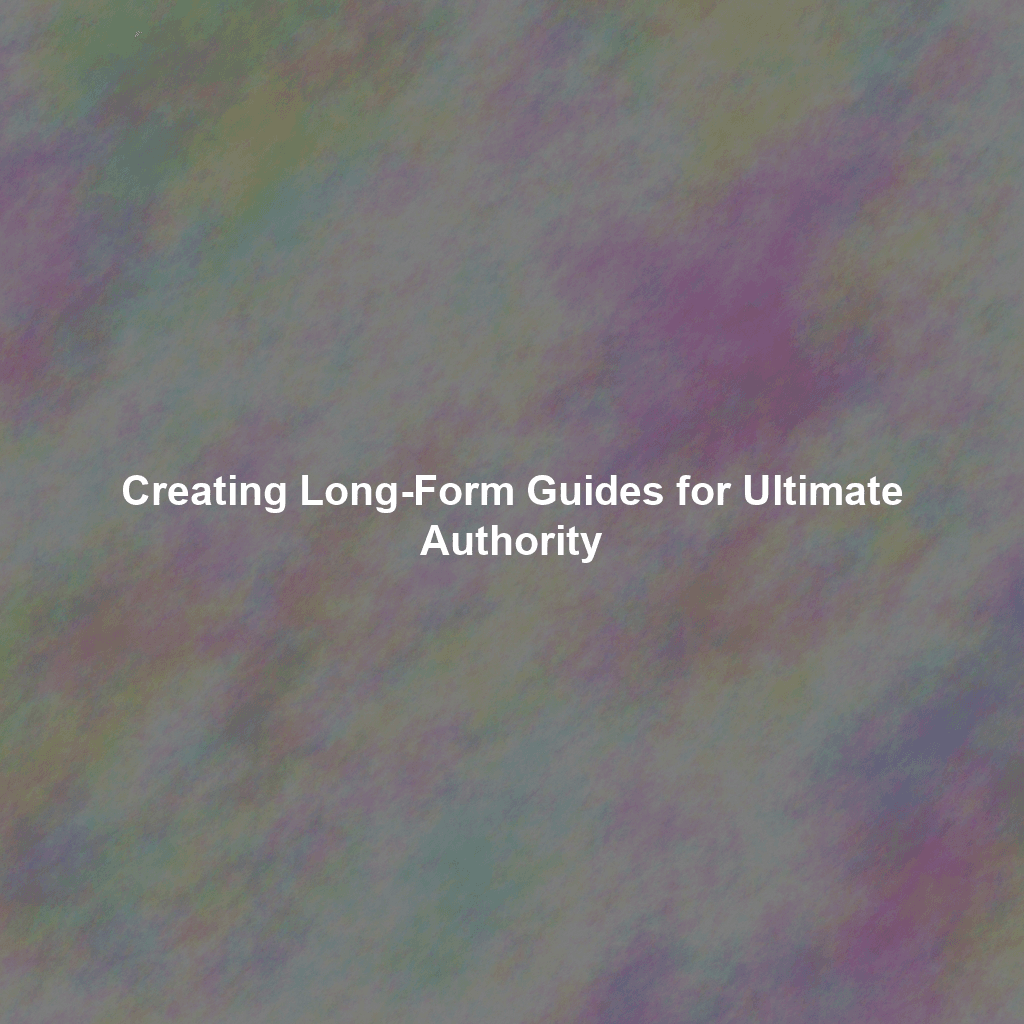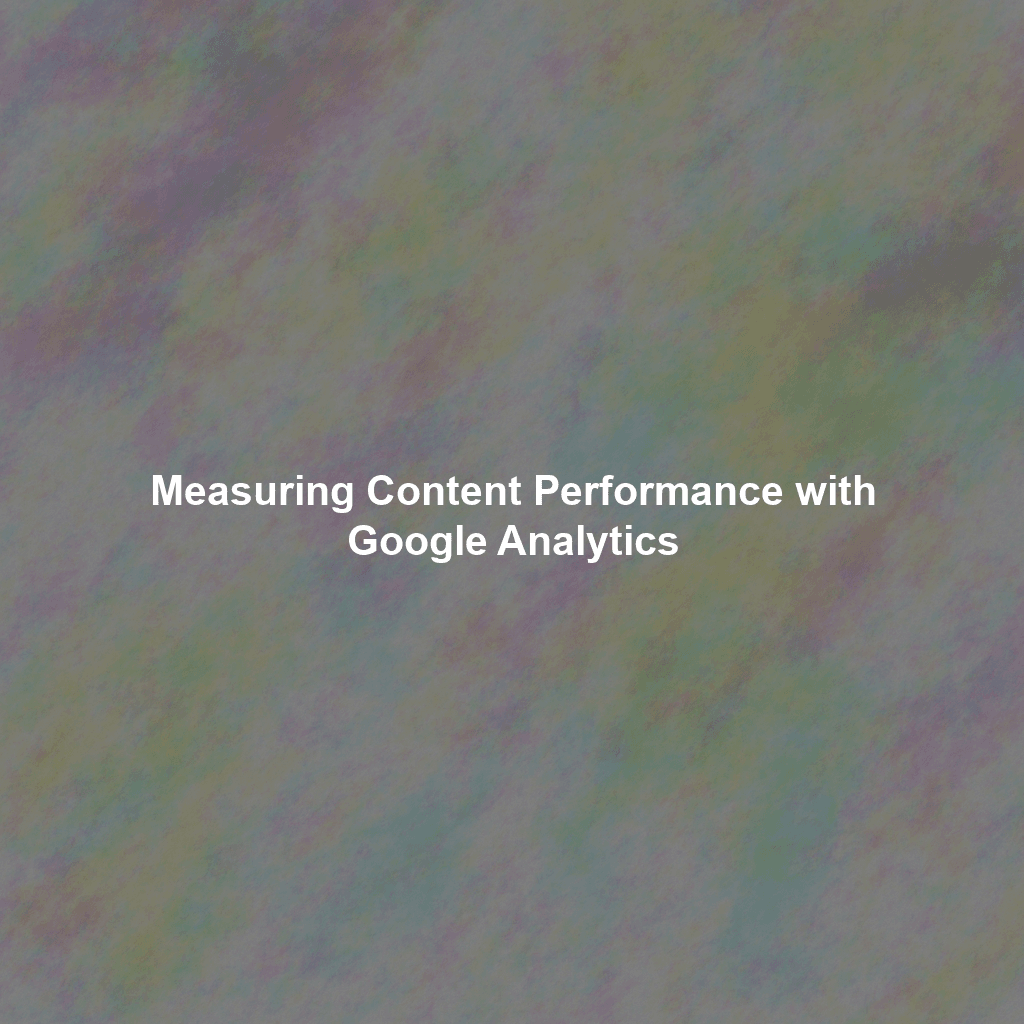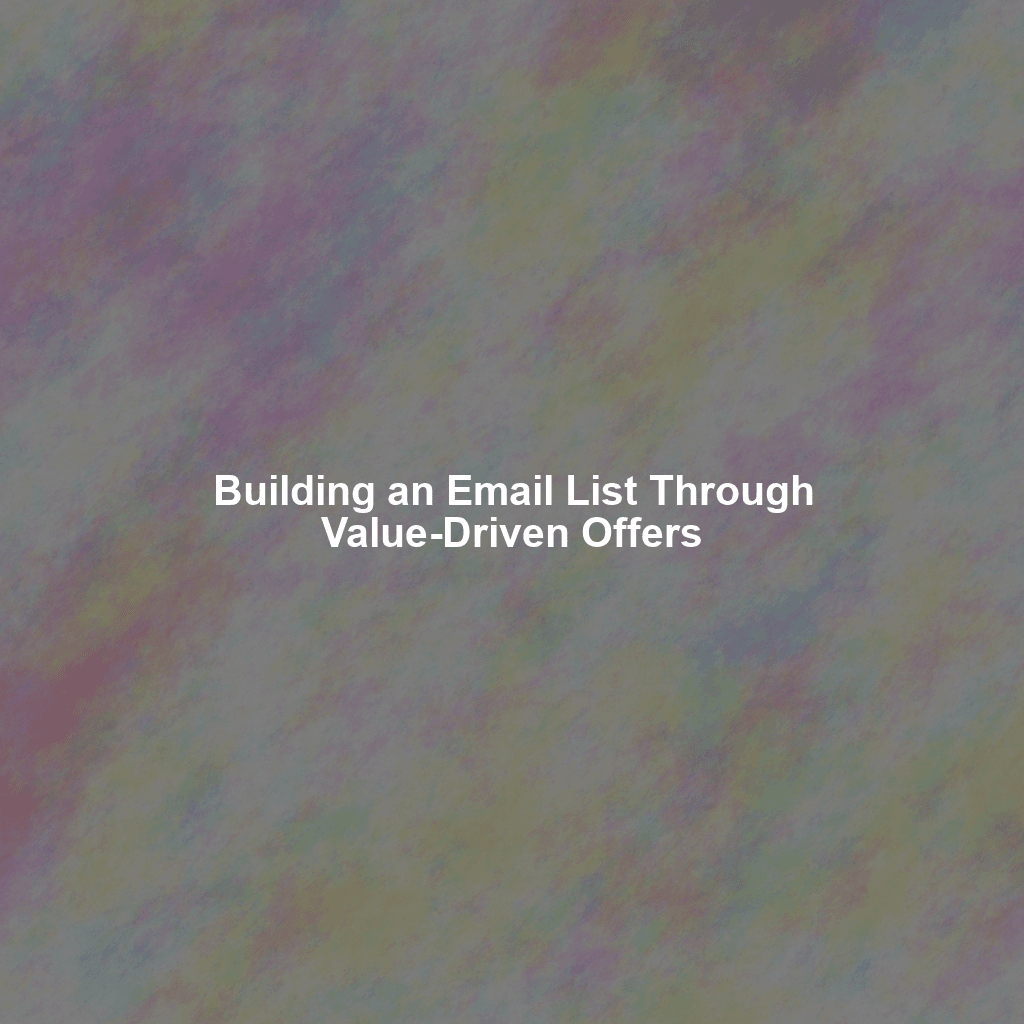The Power of the Comprehensive Guide: Why Long-Form Matters
The benefits of producing long-form content are numerous. It boosts your website’s SEO, attracting more organic traffic. It establishes your expertise, fostering trust with potential customers. And it provides valuable lead generation opportunities, converting visitors into loyal followers and paying clients. When done right, a long-form guide can be a powerful engine for growth.
Planning Your Guide: Laying the Foundation for Success
Before you even think about writing a single word, careful planning is crucial. A haphazardly created guide, regardless of length, will fail to achieve its objectives. Here’s how to lay the groundwork for a successful long-form guide:
1. Identify Your Target Audience and Their Needs
Who are you writing this guide for? What problems are they facing? What questions are they asking? Understanding your audience is the first and most important step. Conduct thorough research to identify their pain points, challenges, and aspirations. Use surveys, social media listening, and competitor analysis to gain valuable insights. Knowing your audience inside and out will allow you to tailor your content to their specific needs, ensuring that it resonates and provides real value.
2. Choose a Relevant and High-Value Topic
The topic you choose should be highly relevant to your target audience and align with your business goals. It should also be a topic that you can confidently address with authority and expertise. Consider what areas your audience consistently struggles with and identify opportunities to provide unique insights or practical solutions. Keyword research tools can help you identify popular search terms and topics with high potential for organic traffic. Remember to choose a topic broad enough to warrant a comprehensive guide, but narrow enough to maintain focus and avoid overwhelming your readers.
3. Conduct Comprehensive Keyword Research
SEO is an integral part of content marketing, and your long-form guide is no exception. Identify relevant keywords that your target audience is searching for. Use keyword research tools like Google Keyword Planner, SEMrush, or Ahrefs to find high-volume, low-competition keywords. Incorporate these keywords naturally throughout your guide, including in your title, headings, subheadings, and body text. Optimize your guide for both short-tail and long-tail keywords to maximize your reach and attract a diverse range of search queries. A well-optimized guide will rank higher in search engine results, driving more organic traffic to your website.
4. Create a Detailed Outline
A detailed outline is the roadmap for your long-form guide. It will help you stay organized, maintain focus, and ensure that you cover all the essential aspects of your topic. Break down your topic into logical sections and sub-sections, creating a clear and coherent structure. Each section should have a specific purpose and contribute to the overall goal of the guide. Use headings and subheadings to create visual hierarchy and make it easy for readers to navigate your content. A well-structured outline will make the writing process much easier and ensure that your guide is both informative and engaging.
Crafting Compelling Content: Engaging Your Audience
Once you have a solid plan in place, it’s time to start writing. The key to creating a successful long-form guide is to provide high-quality, engaging content that keeps your readers hooked from beginning to end. Here’s how to craft compelling content that resonates with your audience:
1. Write in a Clear and Concise Style
Avoid jargon and overly complex language. Use simple, straightforward language that is easy to understand. Break down complex ideas into smaller, more manageable chunks. Use short sentences and paragraphs to improve readability. Remember, your goal is to educate and inform your audience, not to impress them with your vocabulary. A clear and concise writing style will make your guide more accessible and engaging, encouraging readers to stay until the end.
2. Provide Actionable Advice and Practical Examples
Don’t just tell your readers what to do; show them how to do it. Provide actionable advice and practical examples that they can implement immediately. Use case studies, real-world scenarios, and step-by-step instructions to illustrate your points. The more practical and applicable your content is, the more valuable it will be to your audience. Providing actionable advice will not only help your readers achieve their goals but also establish you as a trusted source of information.
3. Incorporate Visual Elements
While the text of your guide is important, visual elements can greatly enhance its appeal and readability. Unfortunately I cannot include those here, but consider including images, videos, infographics, and charts to break up large blocks of text and illustrate your points. Visuals can help to capture your audience’s attention, clarify complex concepts, and make your guide more visually appealing. Choose visuals that are relevant to your content and that add value to the overall reading experience.
4. Tell a Story
Storytelling is a powerful way to connect with your audience on an emotional level. Use stories, anecdotes, and personal experiences to illustrate your points and make your content more relatable. Stories can help to capture your audience’s attention, make your content more memorable, and create a stronger connection with your brand. Think about how you can weave storytelling into your guide to make it more engaging and impactful.
5. Back Up Your Claims With Data and Research
To establish credibility and build trust with your audience, it’s essential to back up your claims with data and research. Cite credible sources, provide statistics, and reference relevant studies to support your arguments. This will demonstrate that you’ve done your homework and that your content is based on solid evidence. Citing your sources will not only enhance your credibility but also provide readers with additional resources for further learning.
Optimizing for SEO: Making Your Guide Discoverable
Creating a fantastic long-form guide is only half the battle. You also need to optimize it for SEO to ensure that it gets discovered by your target audience. Here are some key SEO strategies to implement:
1. Optimize Your Title and Meta Description
Your title and meta description are the first things that people will see in search engine results. Make sure they are compelling, informative, and optimized for your target keywords. Your title should accurately reflect the content of your guide and entice users to click through. Your meta description should provide a brief summary of your guide and highlight its key benefits. Optimize both your title and meta description to increase your click-through rate (CTR) and improve your search engine rankings.
2. Use Header Tags Effectively
Header tags (H1, H2, H3, etc.) are used to structure your content and make it easier for search engines to understand. Use header tags to create a clear hierarchy of information and to highlight your key keywords. Your H1 tag should be the main title of your guide and should contain your primary keyword. Use H2 and H3 tags for your subheadings and section titles, incorporating relevant keywords where appropriate. Using header tags effectively will not only improve your SEO but also make your guide more readable and navigable.
3. Build Internal and External Links
Internal links are links that point to other pages on your website. External links are links that point to other websites. Both types of links are important for SEO. Internal links help search engines to crawl and index your website more efficiently. They also help to distribute link juice throughout your site. External links demonstrate that your content is credible and well-researched. Link to relevant and authoritative sources to enhance your credibility and improve your search engine rankings.
4. Optimize Your Images
Again, images cannot be included here, but when you do add them, optimize your images for SEO by using descriptive file names and alt text. Alt text is the text that is displayed when an image cannot be loaded. Use alt text to describe the content of your image and to incorporate relevant keywords. Optimizing your images will not only improve your SEO but also make your website more accessible to users with visual impairments.
5. Promote Your Guide
Once you’ve published your guide, it’s time to promote it. Share it on social media, email it to your subscribers, and reach out to influencers in your industry. Consider running paid advertising campaigns to reach a wider audience. The more people who see your guide, the more likely it is to generate leads and drive traffic to your website. Actively promote your guide to maximize its impact and achieve your content marketing goals.
Conclusion: Mastering Long-Form Content for Lasting Impact
Creating a long-form guide is a significant investment of time and resources. However, the potential return on investment is well worth the effort. A well-crafted guide can establish you as an authority in your niche, attract more organic traffic, generate leads, and ultimately drive business growth. By following the steps outlined in this guide, you can create compelling, informative, and engaging long-form content that resonates with your audience and achieves your content marketing objectives. Remember, it’s not just about the length of your content; it’s about the quality, the value, and the impact it has on your readers. Embrace the power of long-form content and watch your brand soar.
 Skip to content
Skip to content

